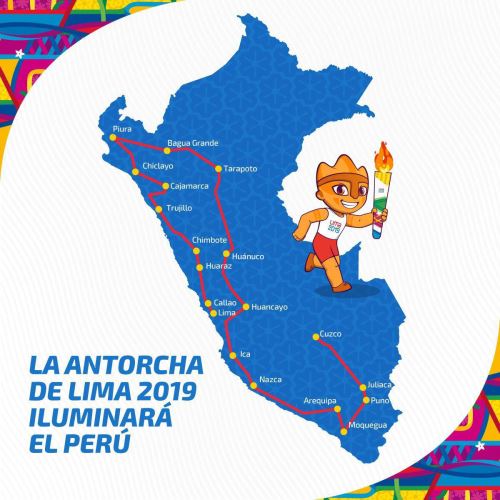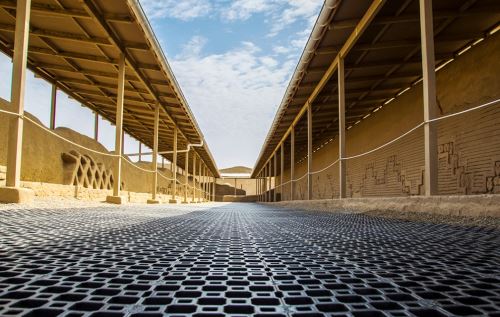After the flame of the
Pan American torch was lit in the ancient Ruins of Teotihuacan (Mexico) on Tuesday, the torch will reach the mesmerizing Inca citadel of Machu Picchu to begin a 23-day journey across 26 cities in the Andes, jungle and coast of Peru.
This article lists the emblematic places the Pan American torch will visit —carried by enthusiastic torchbearers— before reaching the Lima-based National Stadium on July 26 for the Opening Ceremony.

Machu Picchu
Peru's iconic destination,
Machu Picchu, is a must-see for travelers. The citadel is a sample of Incas' development. This archaeological site is on UNESCO's World Heritage List and is one of the New Seven Wonders of the World.
The magnificent Inca citadel is surrounded by a mountainous tropical rainforest. Getting to and from it requires long walks. Moreover, its architectural design and landscape provide an unforgettable experience to visitors.
Winikunka
Peru's wonderful
Winikunka (Quechua word for Seven-color Mountain), rising at over 5,000 m.a.s.l., has become the second-most popular destination in the Andean nation after the archaeological park of Machu Picchu.
The mountain is accessible from a hiking trail that passes through breathtaking landscapes.
More and more people visit this beautiful place attracted by its natural beauty.
Colca Valley
Another landmark in the route is
Colca Valley. Located in Caylloma Province, this area is a great place to observe amazing landscapes.
The majestic flight of the condor —an emblematic Andean bird— is one of the most eagerly awaited spectacles by visitors to the area.
The recent designation of Colca and Andagua Volcanoes as UNESCO Geopark and its inclusion to the Global Geoparks Network have caught attention of tourists, who take the opportunity to tour some geo routes like the geyser in Pinchollo.
The valley is located four hours from Arequipa City. It offers a variety of bridle paths linking towns as well as fertile terrace systems and mountains.
Nazca Lines
Situated in the arid Peruvian coastal plain, some 400 km south of Lima, the
geoglyphs of Nazca cover about 450 km2.
They include more than 800 straight lines, 300 geometric figures, as well as 70 plant, animal, and anthropomorphic designs.
While some researchers believe the glyphs were part of an astronomical observatory, others believe they acted as a calendar.
The huge figures can be viewed in full only from the sky.
Lake Titicaca
Considered the highest navigable lake in the world,
Lake Titicaca is a sacred place for its surrounding population.
Popular floating islands are part of this beautiful destination, which are inhabited by descendants of ancient civilizations predating the Incas.
Chan Chan
The
Chan Chan archaeological complex is another sample of pre-Inca advanced architectural and engineering practices. It is the largest adobe city in South America.

Located in Moche Valley —not far from the beachside town of Huanchaco and Trujillo city— Chan Chan was built between 9th and 15th centuries A.D. and covers an area of approximately 20 square kilometers.
It must be noted the site was included in UNESCO Worldwide Heritage List back in 1986.
Torch relay
The Pan American Torch will travel through 26 emblematic cities before arriving in the Peruvian capital, Lima.
(END) LZD/MAO/RMB/MVB
Published: 7/3/2019